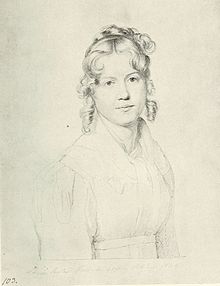
German Romanticism was the dominant intellectual movement of German-speaking countries in the late 18th and early 19th centuries, influencing philosophy, aesthetics, literature, and criticism. Compared to English Romanticism, the German variety developed relatively early, and, in the opening years, coincided with Weimar Classicism (1772–1805).
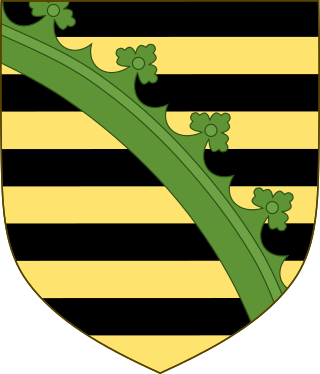
The House of Wettin was a dynasty which included Saxon kings, prince-electors, dukes, and counts, who once ruled territories in the present-day German federated states of Saxony, Saxony-Anhalt and Thuringia. The dynasty is one of the oldest in Europe, and its origins can be traced back to the town of Wettin, Saxony-Anhalt. The Wettins gradually rose to power within the Holy Roman Empire. Members of the family became the rulers of several medieval states, starting with the Saxon Eastern March in 1030. Other states they gained were Meissen in 1089, Thuringia in 1263, and Saxony in 1423. These areas cover large parts of Central Germany as a cultural area of Germany.

Saxe-Weimar-Eisenach was a German state, created as a duchy in 1809 by the merger of the Ernestine duchies of Saxe-Weimar and Saxe-Eisenach, which had been in personal union since 1741. It was raised to a grand duchy in 1815 by resolution of the Congress of Vienna. In 1903, it officially changed its name to the Grand Duchy of Saxony, but this name was rarely used. The grand duchy came to an end in the German Revolution of 1918–19 with the other monarchies of the German Empire. It was succeeded by the Free State of Saxe-Weimar-Eisenach, which was merged into the new Free State of Thuringia two years later.

The Walhalla is a hall of fame Monument that honours laudable and distinguished people in German history – "politicians, sovereigns, scientists and artists of the German tongue"; thus the celebrities honoured are drawn from Greater Germany, a wider area than today's Germany, and even as far away as Britain in the case of several Anglo-Saxon figures. The hall is a neo-classical building above the Danube River, in Donaustauf, east of Regensburg in Bavaria, the exterior modelled on the Parthenon in Athens.
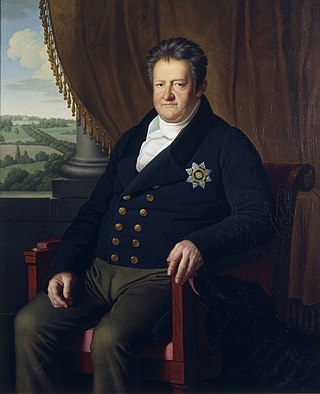
Karl August, sometimes anglicised as Charles Augustus, was the sovereign Duke of Saxe-Weimar and of Saxe-Eisenach from 1758, Duke of Saxe-Weimar-Eisenach from its creation in 1809, and grand duke from 1815 until his death. He is noted for the intellectual brilliance of his court.

Saxe-Weimar was one of the Saxon duchies held by the Ernestine branch of the Wettin dynasty in present-day Thuringia. The chief town and capital was Weimar. The Weimar branch was the most genealogically senior extant branch of the House of Wettin.

Maria Pavlovna was a grand duchess of Russia as the daughter of Paul I, Emperor of all the Russias and Empress Maria Feodorovna and later became the Grand Duchess of Saxe-Weimar-Eisenach by her marriage to Charles Frederick of Saxe-Weimar-Eisenach (1783–1853).

Christiane Friederike Wilhelmine Herzlieb, known as Minna was the foster-daughter of the German publisher Carl Friedrich Ernst Frommann (1765–1839).

Princess Marie Luise Alexandrina of Saxe-Weimar-Eisenach was a princess of Saxe-Weimar-Eisenach, by birth, and, by marriage, a princess of Prussia. She was the daughter of Charles Frederick, Grand Duke of Saxe-Weimar-Eisenach and Grand Duchess Maria Pavlovna of Russia.
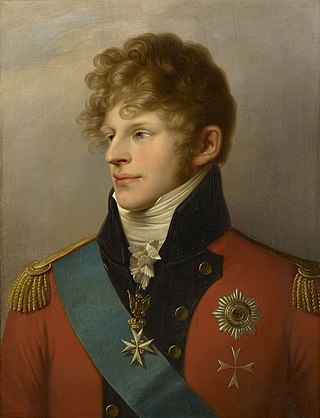
Augustus, Duke of Saxe-Gotha-Altenburg, was a Duke of Saxe-Gotha-Altenburg, and the author of one of the first modern novels to treat of homoerotic love. He was the maternal grandfather of Prince Albert, consort of Queen Victoria.

Heinrich Christoph Kolbe was a German painter. He is associated with the Düsseldorf school of painting.

The Weimar Princely Free Drawing School was an art and literature educational establishment. It was set up in 1776 in Weimar by the scholar and ducal private-secretary Friedrich Justin Bertuch (1747–1822) and the painter Georg Melchior Kraus (1737–1806), as part of Weimar Classicism. It was financed by the young Charles Augustus, Grand Duke of Saxe-Weimar-Eisenach and heavily promoted by Goethe, who also taught there. Among its pupils were Charles Augustus's future mistress Karoline Jagemann. It lasted until 1930.
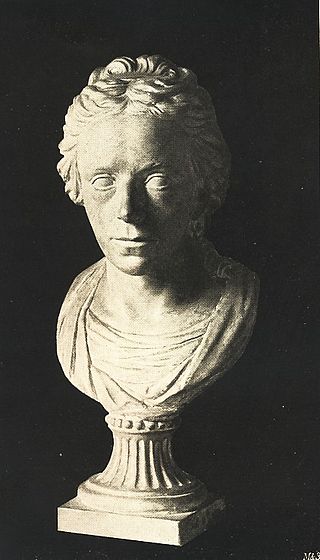
Louise Ernestine Christiane Juliane von Göchhausen was Chief Lady-in-Waiting to Duchess Anna Amalia of Saxe-Weimar-Eisenach. Known for her sharp wit, she became a close friend of Johann Wolfgang von Goethe.

Baroness Sylvie von Ziegesar was a German noblewoman active in the intellectual circles of Weimar Classicism. She was a friend of the painter Louise Seidler and the intellectual Pauline Gotter, and was also the subject of Goethe's poem "To Sylvie von Ziegesar".
Pauline Gotter was the second wife of Friedrich Wilhelm Joseph Schelling and a friend of Louise Seidler and Sylvie von Cigars.

Caroline Bardua was a German painter. She was one of the first middle-class women who was able to create an existence for herself as an independent artist.
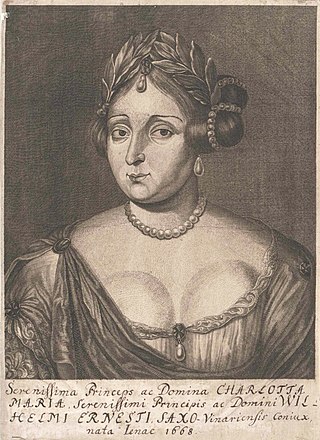
Charlotte Marie of Saxe-Jena, was a German princess member of the House of Wettin in the branch of Saxe-Jena and by marriage Duchess of Saxe-Weimar.

Friedrich Wilhelm Riemer was a German scholar and literary historian. He worked in the households of Wilhelm von Humboldt and Johann Wolfgang von Goethe.
Events from the year 1810 in Germany.
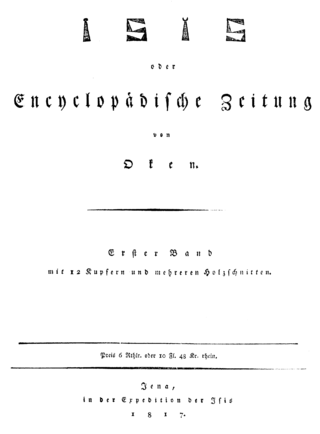
Isis was an encyclopedic journal that focused on articles on natural science, medicine, technology, economics as well as art and history. It also published important articles on science policy and the organization of science. Edited by Lorenz Oken and published by Friedrich Arnold Brockhaus, Isis was the first interdisciplinary journal in the German-speaking world.

